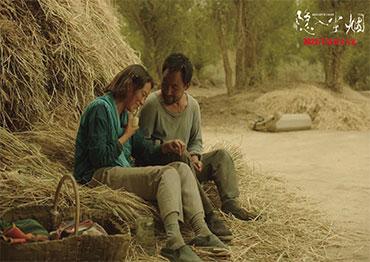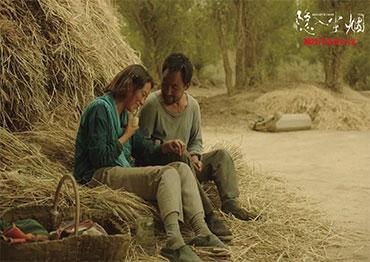Return to Dust was a sleeper hit at the box office. After its first week on July 8, the indie art-house film only brought in 1.57 million yuan (US$220,000). Industry insiders forecasted a total box office run of 2 million yuan (US$290,000).
But 40 days after its release, its box office numbers skyrocketed. In the first week of September, it went from 30 million yuan (US$4.3m) in revenue to 100 million yuan (US$14.3m). It raked in 14.38 million (US$2m) in a single day in September. As the film’s positive reception increased, theaters repeatedly extended its run from one month to three months ending September 30.
Word of mouth was behind the push, with fans taking to platforms such as Douyin (China’s TikTok) and video site Bilibili to wax lyrical about the film. On Douyin alone, videos hashtagged Return to Dust have garnered more than 2.58 billion views.
While most netizens praised the film for its realism and relatability, some argued it overemphasizes the suffering of rural people and the poor condition of Chinese villages. Others condemned it for dramatizing “the bleak realities of Chinese villages to cater to judges on international award panels.”
“I feel the film is strikingly realistic. When watching the film, lots of faces of villagers from my hometown kept popping up in my mind,” said Ge Ou, a 32-year-old history teacher in Beijing originally from a village in Yuanping County, North China’s Shanxi Province.
“Many on social media questioned the director’s dramatization of the protagonists’ miserable fates and whether nowadays there are still people who live in such an extremely poor and hopeless state in China’s villages. I want to say that the bleak realities depicted in the film exist in many impoverished villages in northwestern China,” Ge told NewsChina.
“There are not only prosperous ‘new countrysides’ and happy ‘new peasants’ in the eastern and southeastern coastal areas of our country, but also lots of poor villages in the northwest. Also, there are lots of marginalized people in rural areas discriminated against, such as the disabled, middle-aged and old unmarried men and women and childless couples. I’m so pleased that this film has faithfully and empathetically portrayed these groups,” Ge said.
On July 25, vlogger Yige Caixiang posted the mini documentary How Second Uncle Cured My Mental Burnout after Being Back in the Village for Three Days on short video platform Bilibili. The video went viral on Chinese social media, racking up 10 million views in a single day.
It tells the story of Second Uncle, a 66-year-old disabled carpenter and the vlogger’s uncle-in-law, who overcomes his adversities – disability, lack of access to education, poverty and bachelorhood – with resilience and optimism.
Many netizens compared Second Uncle with Return to Dust for their realistic depictions of living conditions in villages. Some called the short video “the vlog version of Return to Dust.” Some netizens said that the phenomenal popularity of Second Uncle and Return to Dust reflects the Chinese audience’s longing for film and television that faithfully portray the lives of people at the bottom rungs of society who have long been misrepresented or altogether absent.
Song Fangjin, screenwriter of 19 films and television series including the TV series Cellphone (2009), posted his thoughts to Weibo about Second Uncle on July 26: “A vlog that properly tells a good story that spreads at meteoric speed and on a terrifying scale in a single day – tragically reflects the bleak reality that many current [Chinese] films and television series are so hollow, shallow and out of touch that audiences increasingly feel unable to relate to them.”
On April 25 last year, during a lecture at Gulouxi Theater in Beijing, Mao Jian, writer and Chinese literature professor at East China Normal University in Shanghai, castigated Chinese films and TV for their shallowness, money worship and misrepresentation of social realities.
She pointed out that today’s Chinese film and television creators focus on social elites and wealthy people while stigmatizing the poor. In many shows, such as Ode to Joy (2016) and Nothing but Thirty (2020), creators endow wealthy characters with favorable qualities such as honesty, innocence, kindness and elegance, while painting poor characters – particularly those from rural areas – as dishonest, cunning and rude, Mao said.
Li Ruijun said the people on Chinese society’s bottom rung, particularly its 500 million rural residents, deserve to be faithfully represented.
“Life is like a marathon. Many people don’t make it anywhere – they just merged into the unseen background of those leading the race,” Li told Zhengguan News.
“Those at the top of the social pyramid don’t need my lens to display their lives. Everyone sees them. I want to show the massive groups at the bottom of the pyramid. After all, in this marathon, everyone is giving it all they got,” Li said.

 Old Version
Old Version



